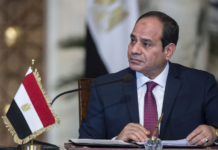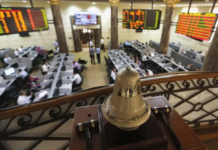The road to economic recovery in Egypt has been set, regardless of pediments, risks, challenges, and shaky hands. The government has made its choice for a rocky road with set goals of 6 percent growth over the current fiscal year.
‘Bloomberg’ has previewed in a recent report the details of documents revealed by the International Monetary Fund (IMF) concerning the agreement with Egypt to give ‘extensive credit facilities’ worth USD 12 billion over three years.
IMF mentioned that the implementation of the programme faces high risk; however, the support from the political leadership comprehends this risk, over three years.
The report uncovered the important points in the documents clarifying that Egypt’s economic programme is fully financed till the end of the current fiscal year. But, Egypt needs to expand into other financial resources over the next two fiscal years, which are likely to be provided through the multilateral support. Also, regular semi-annual audits will be carried out by IMF, and the first audit will be completed by Mid-March.
IMF expects that the current account deficit will shrink to 3 percent of total GDP by the fiscal year 2018/2019, compared to 5.6 percent in last June. Also, it’s expected that the economic growth will increase between 5-6 percent on the medium term, compared to a 4 percent within the current fiscal year, less than 5 percent growth which had been targeted by the government.
The report illustrated that the financing gap within the tenor of the programme amounts to almost EGP 35 billion for three years; 50 percent of this amount will support the foreign reserves in Central Bank of Egypt (CBE), which will add about USD 4.9 billion to the reserves within the current fiscal year, and about USD 7 billion within next fiscal year, and USD 4 billion in 2018-2019.
The report added that the reserves will rise to USD 33 billion in 2018/2019 which can cover the importing of essential commodities and services for five months, as the foreign reserves reached USD 24.3 billion by the end of last December.
The report mentioned that the agreement contained a pledge from CBE to cancel the restrictions on Capital transfers by next June, as they prevented the individuals from transferring sums exceeding USD 100,000 and cancel the maximum limit of deposits in foreign currency, which amount to USD 50,000, for the companies.
Also, the report mentioned that within the programme’s period, the CBE will use its tools like offering auctions in hard currencies if an excessive fluctuation occurs to the exchange rate on the short term.
It’s worth mentioning that the programme aims to reduce inflation rate on the short term after it reached 23 percent last December, and the economists forecast that the Central Bank it’s expected to reduce the interest rates within the next fiscal year.
Moreover, it’s decided that overdraft financing offered by CBE to the public budget will decrease to less than EGP 75 billion by securitizing assets worth of EGP 250 billion by the end of the current fiscal year 2016/2017.
IMF anticipated the governmental debt will reduce from 94.6 percent of GDP in 2015/2016 to a 78 percent in 2020/2021. By the end of the programme, IMF experts view that budget deficit will drop to a 4.7 percent of GDP, compared to last fiscal year 2015/2016 which reached 12.1 percent.
The programme included also an increase in tax revenues by 2.5 percent of GDP within the programme’s period. The report revealed that Egypt is intended to implement a simple tax system for SMEs by March 2017, to pay small tax on the return annually, along with the achieved value added tax revenues. The increase of wage bill will be contained to achieve financial savings equal to 0.9 percent. The government is working on developing a road map for reforming the pension system by next June.
The report added that the government will reduce the fuel subsidy significantly and is committed to cancel the electricity subsidy completely within five years. The report mentioned that gas production will increase to 4.9 billion cubic feet per day by next June compared to 3.8 billion cubic feet at present. Egypt’s needs of Gas are about 5.2 billion cubic every day.
The report revealed that the State will adopt a strategy for reforming and developing energy sector based on a consultant expert as the government will present a short-term strategy by next March adding that that Egypt agreed to pay the full dues of the international companies by 2019. Economic choices made were more controversial; yet, it is inevitable that the road taken must be completed; there will be a challenge along the road to economic recovery that which will expedite along with the road, yet adjustments and innovative solutions are essential to yield returns.












